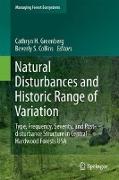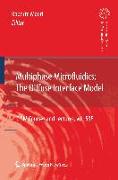- Start
- Natural Disturbances and Historic Range of Variation
Natural Disturbances and Historic Range of Variation
Angebote / Angebote:
This book discusses the historic range of variation (HRV) in the types, frequencies, severities and scales of natural disturbances, and explores how they create heterogeneous structure within upland hardwood forests of the Central Hardwood Region (CHR). The book was written in response to a 2012 forest planning rule which requires that national forests to be managed to sustain ‘ecological integrity’ and within the ‘natural range of variation’ of natural disturbances and vegetation structure. Synthesizing information on HRV of natural disturbance types, and their impacts on forest structure, has been identified as a top need. Historically, both non-anthropogenic and anthropogenic disturbances were integral to shaping central hardwood forests, and essential in maintaining diverse biotic communities. Spatial extent, frequency and severity differ among natural disturbance types, creating mosaics and gradients of structural conditions and canopy openness across the landscape. The book arises from a 2014 symposium at the Association of Southeastern Biologists conference. Chapter authors presented original scientific research and synthesized knowledge of major types of natural disturbances, with a focus on forest structure and implications for forest management. The book focuses on how natural disturbances have historically influenced the structure and composition of central hardwood forests, and what this means for forest management today. Discussion includes such questions as: What was the historic distribution, scale, and frequency of different natural disturbances? How do gradual disturbances occurring over a long period and across a broad landscape differ in effects from abrupt and localized events such as tornadoes? How does topography influence the impact of disturbances? How do native biotic agents such as insects, fungi, and keystone wildlife species, or abiotic factors such as precipitation, drought, temperature, wind and soil interact to alter the outcomes of disturbances? How might disturbance-adapted plants and animals have fared in the hypothetical absence of anthropogenic disturbances? How might climate change alter disturbance regimes and structure of upland hardwood forests in the future? And finally, should, how, and can land managers manage these forests within the HRV of natural disturbance frequencies, spatial extents and gradient of conditions they create?
Folgt in ca. 15 Arbeitstagen





